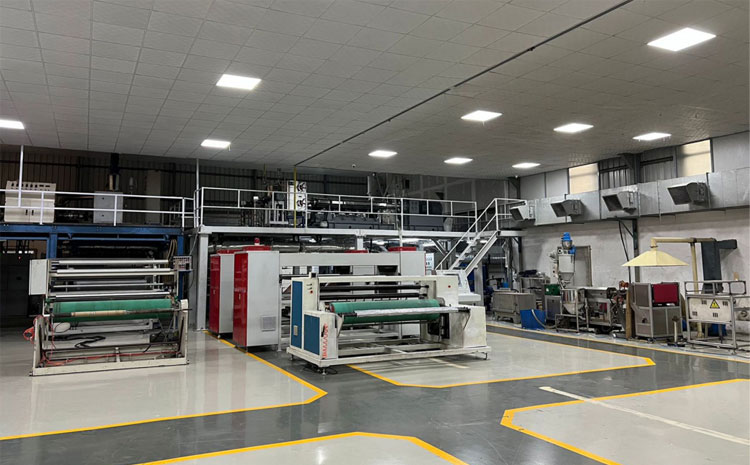MELTBLOWN NON WOVEN FABRIC (FILTER MEDIA)
A highly effective method of producing fine and efficient filter media is using melt blown technology.
The process of making Meltblown fabric filter media begins with raw synthetic thermoplastic material, such as polybutylterephtelate (PBT), polyethylene terephthalate (PET), or polypropylene (PP). The material is melted and orced through an extruder with numerous tiny nozzles. As the individual extrusions exit the nozzles in a semi-melted state, hot air blows them in the same direction. This extends them, resulting in the creation of very fine, continuous fibers.
The fibers can then be mechanically, thermally, or chemically bound together to create a web-like fabric.

PROPERTIES
- BFE, PFE, Breathing Resistance as per requirement for respirators (N90, N95, N99, FFP1, FFP2, FFP3) and surgical masks (ASTM Level 1, ASTM Level 2, ASTM Level 3)
- As per required parameters for pollen filter media, fuel and oil filtration media, engine air filtration media, hydraulic filtration media, room air and vacuum cleaner media, specialty liquid filtration media
TREATMENT
- Hydrophilicity
- Bacterial resistance
- Filtration
- Flame retardance
- Liquid repellency
- Resilience
- Softness
- Sterility
- Strength
- Washability
APPLICATIONS
- Medical – Respirators, Gowns, Coveralls, Drapes
- Filtration – Oil Filtration, Water Filtration, Air Filtration
- Spill Control – Absorbent Pads, Rolls, Booms, Pillows, Socks etc.
- Automobile Industry
